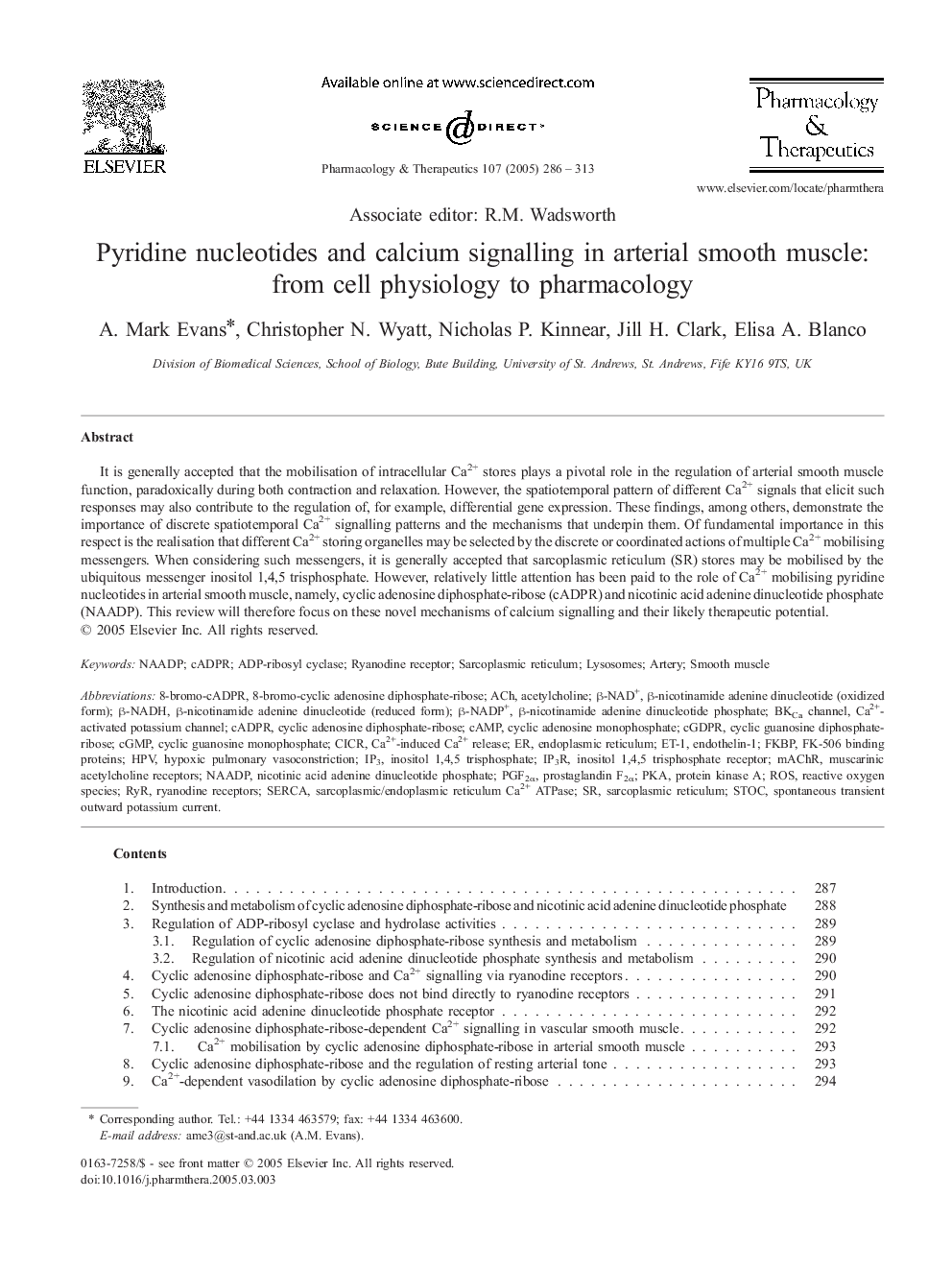| Article ID | Journal | Published Year | Pages | File Type |
|---|---|---|---|---|
| 9015938 | Pharmacology & Therapeutics | 2005 | 28 Pages |
Abstract
It is generally accepted that the mobilisation of intracellular Ca2+ stores plays a pivotal role in the regulation of arterial smooth muscle function, paradoxically during both contraction and relaxation. However, the spatiotemporal pattern of different Ca2+ signals that elicit such responses may also contribute to the regulation of, for example, differential gene expression. These findings, among others, demonstrate the importance of discrete spatiotemporal Ca2+ signalling patterns and the mechanisms that underpin them. Of fundamental importance in this respect is the realisation that different Ca2+ storing organelles may be selected by the discrete or coordinated actions of multiple Ca2+ mobilising messengers. When considering such messengers, it is generally accepted that sarcoplasmic reticulum (SR) stores may be mobilised by the ubiquitous messenger inositol 1,4,5 trisphosphate. However, relatively little attention has been paid to the role of Ca2+ mobilising pyridine nucleotides in arterial smooth muscle, namely, cyclic adenosine diphosphate-ribose (cADPR) and nicotinic acid adenine dinucleotide phosphate (NAADP). This review will therefore focus on these novel mechanisms of calcium signalling and their likely therapeutic potential.
Keywords
cADPRcGDPRCa2+-activated potassium channelβ-NADHβ-NAD+STOCSarcoplasmic/endoplasmic reticulum Ca2+ ATPaseADP-ribosyl cyclaseInositol 1,4,5 trisphosphate receptorPGF2αNAADPIP3RRyRET-1IP3pKaFKBPcGMPmAChRcAMPinositol 1,4,5 trisphosphateROSβ-nicotinamide adenine dinucleotide phosphatecyclic adenosine diphosphate-riboseCyclic adenosine monophosphateAChAcetylcholinenicotinic acid adenine dinucleotide phosphateCa2+-induced Ca2+ releaseendothelin-1Sarcoplasmic reticulumArteryendoplasmic reticulumsmooth muscle SERCALysosomescyclic guanosine monophosphatehypoxic pulmonary vasoconstrictionHPVprotein kinase AProstaglandin F2αBKCa channelCICRReactive oxygen speciesRyanodine receptorMuscarinic acetylcholine receptorsRyanodine receptors
Related Topics
Health Sciences
Pharmacology, Toxicology and Pharmaceutical Science
Pharmacology
Authors
A. Mark Evans, Christopher N. Wyatt, Nicholas P. Kinnear, Jill H. Clark, Elisa A. Blanco,
